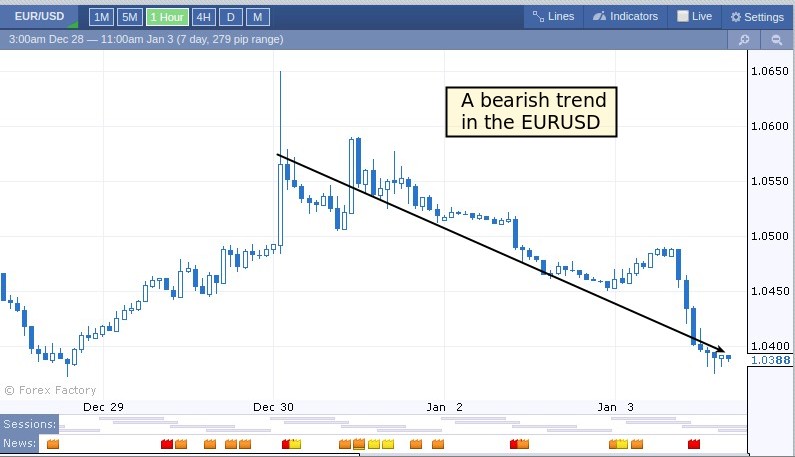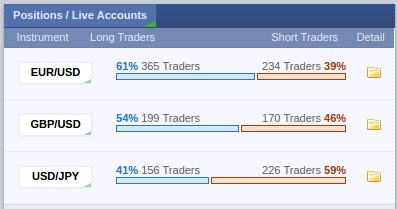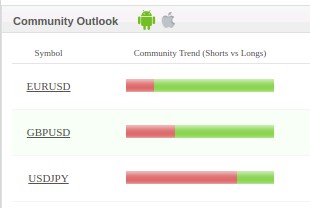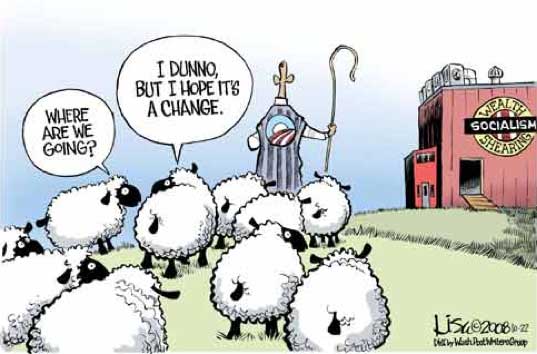Trend following is a very important concept in trading, particularly in FX trading where such movements often lead to very good opportunities to make a handsome profit. However it is often difficult to gauge if there is a trend, if the trend is strong enough and how likely it is for a trend to continue or reverse. Today I want to talk about a way to measure trends that has absolutely nothing to do with charts: retail trader positioning. I will talk about why this works as a measure of trend existence, as a measure of trend strength and as a probability of small trend reversals. We will also go through some of the limitations of such a technique and how we can potentially run live trading experiments using this data.
–

–
Retail traders lose money as a group, this is no mystery. Due to this fact many people believe that all you have to do to make a profit is do the opposite of what retailers do but since retailers lose due to random chance – not due to them having a negative edge – doing the opposite of what a retail trader does will lead to a loss as well. This is a consequence of retail losses in the long term being caused mainly by trading costs, rather than by having any foresight into where prices are going to be. However I have in fact noticed that whenever I make the most money I seem to be trading against the core of retail traders. Why is this the case if retail traders have no long term negative edge? Are they making collectively bad trading decisions somehow under some circumstances?
The answer is very simple and has nothing to do with retailers having some sort of negative edge. It however has everything to do with trends. Whenever I make a big profit this often happens during times where FX instruments are trending heavily, this means that there are strong directional movements in the market that have moved price significantly in a given direction. When prices move strongly, retailers react predictably. When there is a strong trend most retail traders that are positioned in favor of the trend will tend to close their positions very quickly – for some limited gain – while the core of retailers will hold positions deeply into losses. This is why retailers end up – after a trend – being positioned significantly against the movement. If the EURUSD moves down – as in the first image above – retailers end up having a net long EURUSD positioning (see the two images below). This is not because they all traded against the trend but simply because retail traders in general trade at unfavorable reward to risk ratios and therefore most in profit quit early and those in losses keep their positions open for longer.
–


–
In both the ForexFactory and MyfxBook community outlooks traders end up being significantly positioned against trends when they happens, all as a consequence of what I explained before. However when positioning of retail traders becomes too extreme they do start to take losses – often as there is some small relief from the initial trend – and this in turn causes the positioning to balance a bit back towards the middle ground. The positioning only moves back into extreme territory once the trend continues and then the retail traders again take some losses and the cycle repeats again and again if the market is trending. Should you then just jump into the wagon and do the opposite of what retailers do when the positioning becomes extreme?
It’s not that simple. Although retail trader positioning signals that a trend already happened, it does not signal that well whether a trend will in fact continue or end. If you want to know whether there was a trend in the recent past the retail trader positioning can give you that information – along with how strong the trend was – but it does not tell you whether the trend will continue or not. Nonetheless it does allow you to better time your entries if you want to enter a trade in the direction of the trend. If you want to get into the trend and the positioning is too extreme (for example > 80% against the trend) you might want to wait a bit till the retail positioning relaxes before entering a trade in the direction the trend. This of course will mean entering the trend within a pullback.
–

–
Strategies based on retail trading positioning of course have the problem of not being easily back-testable due to historical positioning not being very easily available. However you can get around this problem by recording positioning values from ForexFactory and Myfxbook using a script and then using the data you record in order to test whether you can get some edge from making trading decisions based on what retails have done. However all I can tell you right now is that whenever you see strong retail positioning in a given direction, the market certainly recently trended in the opposite direction. You don’t even need to look at a price chart to know if there was a trend or how strong it was. If you want to learn more about my trading and how you too can become an algorithmic trader designing and implementing your own strategies please consider joining Asirikuy.com, a website filled with educational videos, trading systems, development and a sound, honest and transparent approach towards automated trading.strategies.




